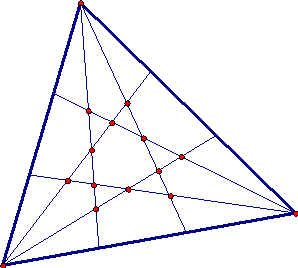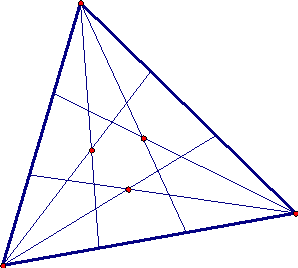Introduction
It is known that given any triangle, its angle bisectors (half-lines which divide the angle into two equal parts) intersect at a single point, which is called the incenter of the triangle.
(Click on any of the vertices of the triangle and move it)
Now what will happen if we divide the angles of the triangle into three equal parts instead of two? (Note that such geometric construction, unlike the previous one, cannot be done only with an unmarked straightedge and a compass). In this case, for each vertice of the triangle, we have two different angle trisectors (half-lines which divide the angles into three equal parts), that intersect each other in twelve different points.

However, we will only consider the intersection points represented on the image below, obtained by intersection of adjacent angle trisectors.

What will happen now if we link them? In 1904, Frank Morley found that we will always obtain an equilateral triangle, regardless of the initial triangle. This equilateral triangle is usually called Morley’s Triangle. Click here to observe this interesting property, called Morley’s Theorem.
(*) This work was carried out under the guidance of Professor Maria Carvalho from the Universidade of Porto, under a grant by the Calouste Gulbenkian Foundation to develop a project for the promotion of Mathematics in Atractor.
Since many browsers are blocking Java nowadays, it was decided (in 2022) to convert to Javascript the original applets of this section. This conversion was carried out by a high-school teacher, who is working full-time in Atractor with the support of the Ministry of Education.
Difficulty level: University